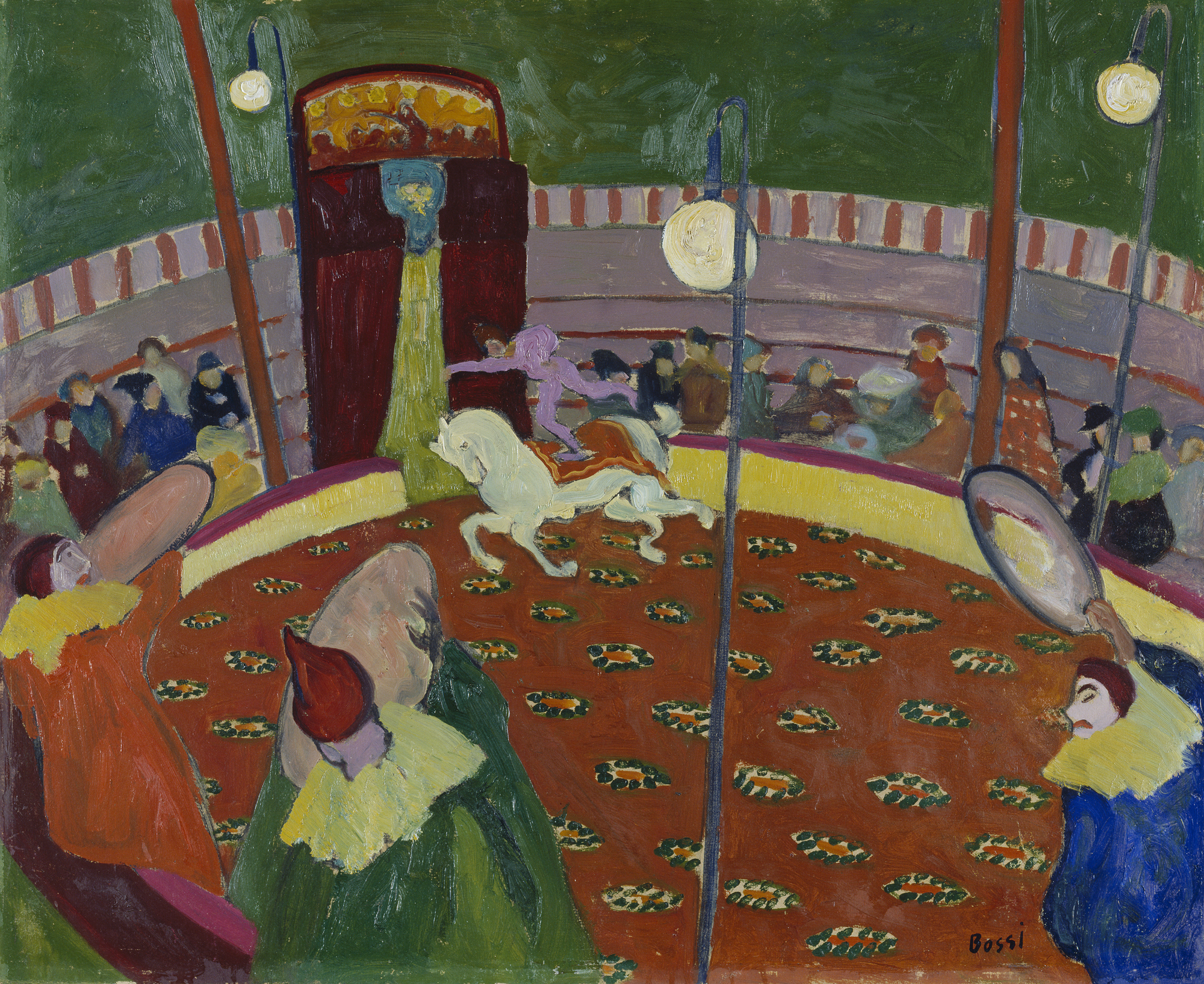Erma Bossi was an Italian artist born in 1882. An artistic prodigy as a teen, she was sent to the Women’s Art Academy in Munich at the turn of the century, where she soon met Gabriele Münter. In 1909 Bossi joined the Neue Künstlervereinigung München (NKVM), which had just been founded and which showed its members’ work at the famous Galerie Thannhauser. This artists’ association included among its members Kandinsky and Münter, Marianne von Werefkin, Franz Marc, Moissey Kogan, Karl Hofer, and others—all the key German Expressionists.
At the outbreak of World War I, Bossi moved to Paris, eventually settling in Milan in 1918. She remained in contact with the Parisian avant-garde, showing her paintings at the annual exhibitions mounted by the Salon des Indépendants and Salon d’Automne. Bossi was one of the few women to participate in the 1930 and 1935 Venice Biennales, her large, simplified forms in festive colors having become a template of the international avant-garde.
Today, we present a work characteristic of her Expressionist period, with bold, sharp colors, which we may confuse with works of Kandinsky or Münter from that period.
P.S. How well do you know art herstory? Test yourself in our quiz about women artists or try our quiz about early modern women painters!
Dear DailyArt users, we are planning to introduce the Swedish language version to our application. To make this possible, we need volunteers who would help us translate our texts into Swedish. If you are a native speaker and would like to join our international team, please fill in this form.


 Erma Bossi
Erma Bossi